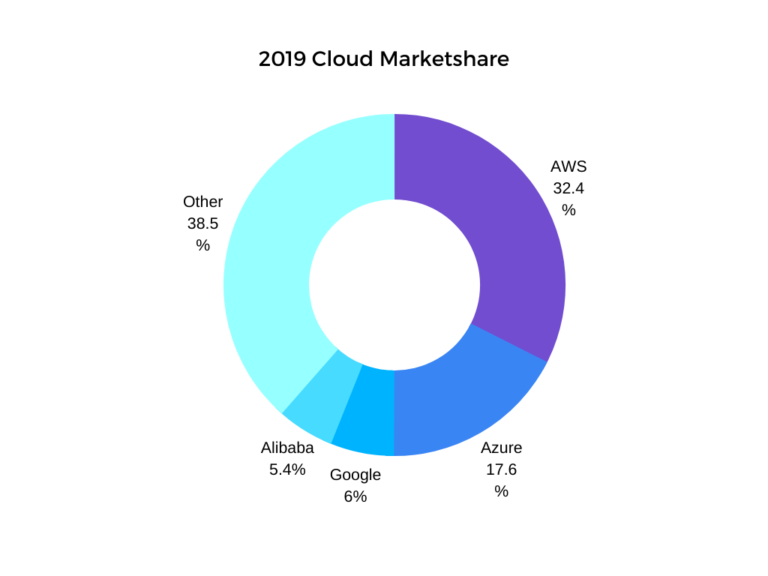One of the coolest projects Level 12 has worked on has been utilizing autonomous drones to inspect wind turbines for damage and analyzing the pictures the drones take with machine learning. I did a brief write-up of this project here. There are all sorts of things to nerd out on: drones, Machine Learning, cloud computing, Internet of Things, and automation.
I could focus on any number of these topics, but I want to look at the cloud computing part in particular.
Cloud Competing

According to this Canalys report, Amazon currently controls 32% of the market, Microsoft Azure 18%, and Google Cloud 6%.
Although AWS is on top for now, Microsoft Azure is closing that gap, having increased their market share from 15% to 18% while AWS’s market share fell from 33.4% in 2018 to 32.4% in 2019. Still, it looks like Amazon is going to remain on top for a long time.
In this particular project we deployed Azure as our client was already heavily invested in Microsoft products. It was the solution that was right for them.
Azure may not have the market share AWS has (Azure was founded about 4 yrs after AWS), but it is a force to be reckoned with.
“over 95% of Fortune 500 companies are using Azure”
In the FinTech world in particular they claim, “85%of global systemically important financial institutions (GSIFI) rely on Microsoft Azure & Office 365.”
Why the disparity between Amazon’s overall market share and Fortune 500/FinTech market share?
Perhaps the biggest reason is simplicity.
Many of these banking and Fortune 500 area already using a host of Microsoft’s industry leading products. You can think of the Dynamics, Power BI, Excel, 365 and many more products. For companies steeped in the Microsoft ecosystem already, Azure is the easy and obvious choice.
Taking Azure to the cloud
At Level 12, we tailor every project we have to our client’s need, so with our client’s heavy investment in Microsoft, Azure was the obvious choice for cloud computing.
Azure allowed us to do a number of things:
- Scale on demand – We are ingesting lots of data from the drone images and have to be able to scale our computing and data storage when we need to. By building in Azure we are able to have a flexible solution we can spin up or down depending on our needs.
- Reduce data storage costs – Azure allows our clients to scale up or down the amount of data storage they need so that they only pay for what they use. Being in startup mode, our client has to run lean and be thoughtful with every dollar spent.
After moving to a private cloud, The Bank of America saved an estimated $2.1 Billion on infrastructure! - Enable Machine Learning – Our client leveraged the capabilities of Azure to build a robust Machine Learning program that will allow them to manage wind turbine quickly and efficiently. Formerly inspections even with drones require skilled technicians to analyze and report on maintenance needs
- Reduce the IT burden – Our client is still in startup mode, so using cloud solutions allows them to stay focused on building awesome software instead of installing, updating, and maintaining servers.
- Reduce the IT admin overhead – By reducing the IT burden, we helped our client run with less administrative overhead, again allowing them to focus on their product more.
Cloudy Judgments

At Level 12 we are cloud agnostic. The biggest question for us is what does the client actually need. In this particular example Azure was the clear answer and we were able to deploy our expertise on that platform.
In other instances the AWS cloud was the right choice and we applied our domain expertise on that solution.
The biggest question you have to ask before you deploy your cloud solution is what do you actually need and why?
If you need help sorting through cloud options or improving your current cloud capabilities, we would be happy to consult with you.
For additional information on Level 12, take a look at our “About Us” PDF.

